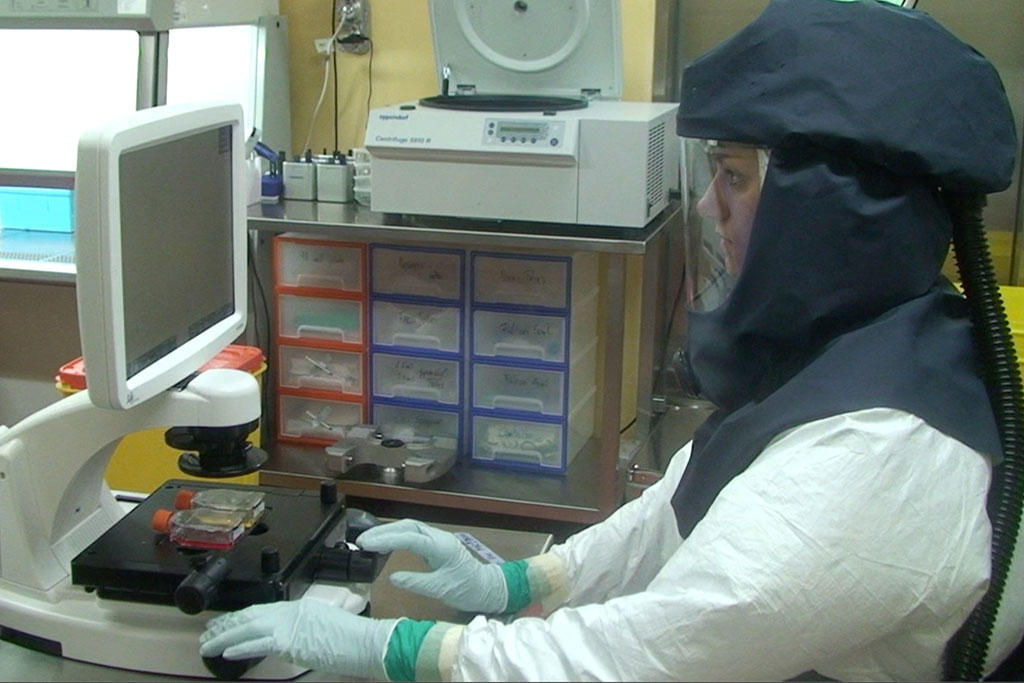New Cloning Technique Can Accurately Assess Transmissibility of Future SARS-CoV-2 Mutants
By LabMedica International staff writers
Posted on 01 Mar 2021
Using the latest sequencing technology and PCR techniques, an international team of researchers has developed an approach that can accurately assess the transmissibility of new mutations of the SARS-CoV-2 virus.Posted on 01 Mar 2021
The findings by the international team, including researchers from University of Bern (Bern, Switzerland), are extremely important for assessing the risk of new mutants running rampant, as they show how a fitness advantage of virus variants can lead to higher transmission.

Image: Working at high-security laboratory of the Institute of Virology and Immunology (Photo courtesy of IVI)
Prior to the emergence of new mutants of the coronavirus, such as the UK variant B.1.1.7, the SARS-CoV-2 variant named D614G had already mutated from the original SARS-CoV-2 pathogen that triggered the pandemic. D614G has rapidly spread to become the most abundant variant worldwide and this D614G mutation remains in all the new emerging variants. The international team of researchers has now been able to demonstrate in both the laboratory and in animal models why the D614G variant was able to gain the upper hand over the original SARS-CoV-2 virus.
The D614G variant carries a mutation in the spike protein that makes it easier for the virus to dock onto human cells. The researchers first demonstrated in human cell cultures from the upper respiratory tract, as well as from the nose, that the D614G variant binds more strongly and also replicates faster than the original virus. The increased replication of the D614G variant was also confirmed in vivo, in a new mouse model first described in this study.
The spread of SARS-CoV-2 viruses can be studied better in other animals rather than mice. Hamsters and ferrets are well established in infection research and are especially suitable animal models. To compare the two variants, a mixture of equal parts of the original version of the SARS-CoV-2 virus and the D614G variant was applied into the nose of each animal under light anesthesia. After one day, experimentally infected animals were re-housed with another healthy sentinel animal of the same species, to evaluate the transmission of the two variants in direct competition with each other. The experiment was repeated with six pairs of animals in total. In virtually all sentinel animals, the proportion of transmitted SARS-CoV-2 viruses was massively dominated by the D614G variant early on.
The differentiation of the variants was carried out using the latest sequencing technology and PCR techniques. This approach can even be used to test any single mutation or a specific combination of mutations that are present in a number of currently circulating viral variants. The approach relies on a cloning technique developed in Bern a year ago, in which SARS-CoV-2 viruses can be exactly reproduced in the laboratory. The UK virus, for example, is known to have not just one but often more than 14 mutations, eight of which occur in the spike protein. Thus, with the help of the cloning technique, any number of mutations of variants can be reproduced and used to compete against each other in the established cell cultures and animal models. The results show how single mutations affect the fitness and transmissibility of new variants.
"Our approach also allows us to characterize emerging mutations such as the British variant B.1.1.7 better and quicker," said Volker Thiel of the Institute of Virology and Immunology (IVI), one of the four lead authors of the study. "Our study stands out because we were able to clearly discern the more efficient transmission of the mutated variant in direct comparison with the original variant. Our testing strategy allows us to rapidly examine why other, newly emerging virus variants have become established."
Related Links:
University of Bern













